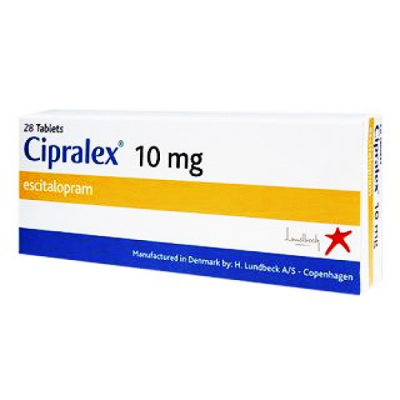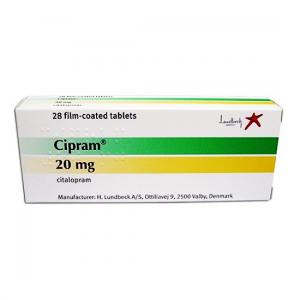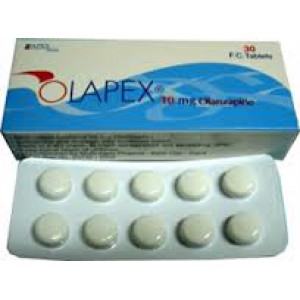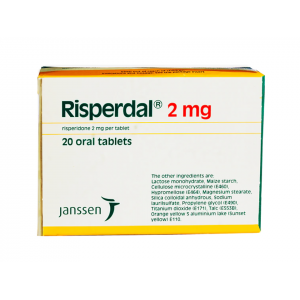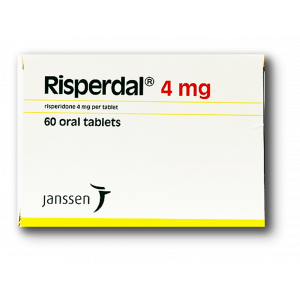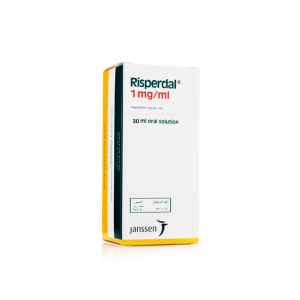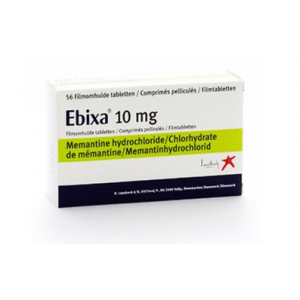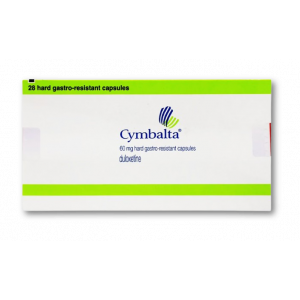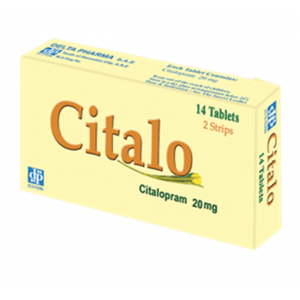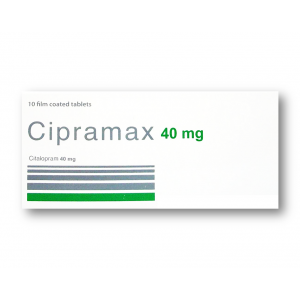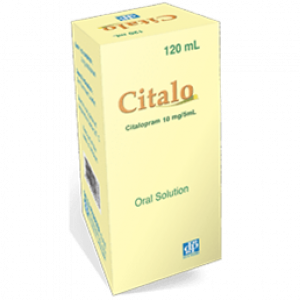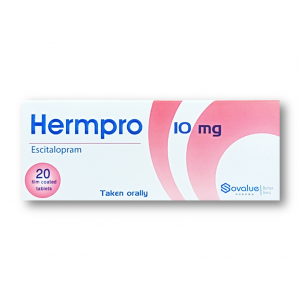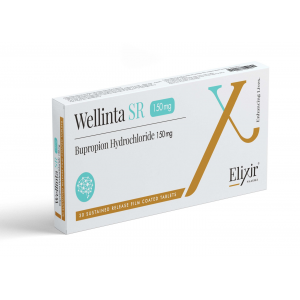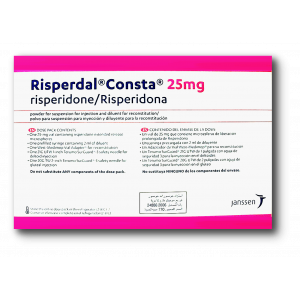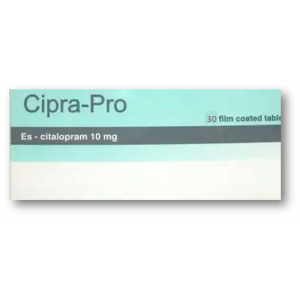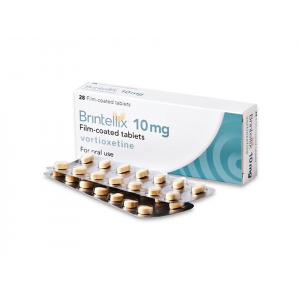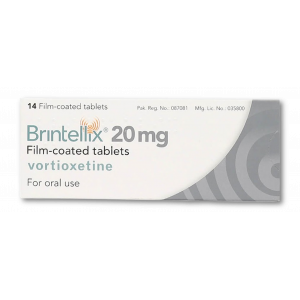- Anti-hestaminic & Respiratory Drugs (20)
- Anti-inflammatory Drugs (192) +-
- Baby & Mom (1322) +-
- Baby & Mom > Bath, skin & Hair > Skin Care > wibes (52)
- Beauty (3042) +-
- Beauty > Skin Care > whitening (306)
- Chemotherapy & Immune Response (883) +-
- Chemotherapy & Immune Response > ANTI-FUNGAL (11)
- Chemotherapy & Immune Response > Chemotherapeutic Agents > Hormone Antagonists >Enzyme Inhibitors (289)
- CIRCULATORY DISTURBANCE AGENTS (24)
- Diet & Fitness Products (284) +-
- DRUG AFFECTING CENTRAL NERVOUS SYSTEM (192)
- HEMATOLOGY (39)
-
Medical Supplies (503)
+-
- Chemicals & Disinfectants (19)
- Dental Supplies (31)
- Devices & Instruments (10)
- Diabetic Supplies (121)
- General Medical Supplies (21)
- I.V & Medical Solution (0)
- Intensive Care Unit & Anesthesia Supplies (0)
- KIDNEY UNIT SUPPLIES (21)
- Lab Supplies (3)
- Miscellaneous (21)
- Neonatal Unit Supplies (0)
- Operation Room Supplies (2)
- Sanitary (5)
- Sterilization Supplies (0)
- Surgical Sutures (4)
- Syringes (3)
-
Medicines & Health (2686)
+-
- Allergy & Sinus (95)
- Children's Health Care (54)
- Cough, Cold & Flu (277)
- Digestive Health & Nausea (233)
- Ear, Nose & Throat Care (179)
- Eye Care (124)
- Feminine Care (325)
- Foot Care (9)
- Orthopaedic Appliances (0)
- Pain Relief & Management (238)
- Pill Organizer (2)
- Skin Treatments (838)
- Sleep & Snoring Aids (2)
- Support & Braces (8)
- Medicines & health > Gout releif (42)
- Natural & Organic Products (81) +-
- OTC > Analgesics > Anti-inflammatory Drugs (44)
-
Personal Care (3269)
+-
- Bath & Body (271)
- Deodorant & Anti-perspirants (190)
- Ear, Nose & Throat Care (175)
- Eye Care (131)
- Feminine Care (374)
- Foot Care (17)
- Hair Care (472)
- Home Tests & Monitorings (14)
- Incontinence (7)
- Lip Care (22)
- Massage & Relaxation (17)
- Natural & Organic Personal Care (7)
- Oral Care (88)
- Pregnancy & Fertility (65)
- Shaving & Grooming (65)
- Sun Care (80)
-
Prescription Drugs (2913)
+-
- Analgesics (181)
- Cardiovascular System (374)
- Drugs Affecting Musculoskeletal System (65)
- Drugs Used In Infections (56)
- Ear & Nose Drugs (2)
- Endocrine System (176)
- Gastrointestinal Tract (244)
- Gastrointestinal Tract > Hepatology > Liver treatment (62)
- GYNECOLOGY (2)
- Miscellaneous (11)
- NEPHROLOGY > URINARY SYSTEM > RENAL DISORDERS > URINARY TRACT DISORDERS (46)
- NEUROLOGY (225)
- Nutrients & Blood Electrolytes (2)
- Respiratory System (154)
- SKIN > NAILS > HAIR > TOPICAL PREPARATIONS (99)
- Vaccines (1)
- Prescription drugs > Cardiovascular system > Anti-hypertension drugs (242)
- Sexual Wellness (301) +-
- Vitamins & Minerals Supplements (1212) +-
Ex Tax: 392EGP
Example
You can return the product within 14 days of purchase.
ReturnsYou can return the product within 14 days of purchase.

Cipralex 10 mg ( Escitalopram ) 28 film-coated tablets
PACKAGE LEAFLET: INFORMATION FOR THE USER
Cipralex 5 mg film-coated tablets
Cipralex 10 mg film-coated tablets
Cipralex 20 mg film-coated tablets
escitalopram
Read all of this leaflet carefully before you start taking this medicine because it
contains important information for you
Keep this leaflet. You may need to read it again.
If you have any further questions, ask your doctor or pharmacist.
This medicine has been prescribed for you only. Do not pass it on to others. It may
harm them, even if their symptoms are the same as yours.
If you get any side effects, talk to your doctor or pharmacist. This includes any
possible side effects not listed in this leaflet. See section 4.
What is in this leaflet:
1. What Cipralex is and what it is used for
2. What you need to know before you take Cipralex
3. How to take Cipralex
4. Possible side effects
5. How to store Cipralex
6. Content of the pack and other information
1. WHAT CIPRALEX IS AND WHAT IT IS USED FOR
Cipralex contains the active substance escitalopram. Cipralex belongs to a group of
antidepressants called selective serotonin reuptake inhibitors (SSRIs). These medicines act
on the serotonin-system in the brain by increasing the serotonin level. Disturbances in the
serotonin-system are considered an important factor in the development of depression and
related diseases.
Cipralex is used to treat depression (major depressive episodes) and anxiety disorders (such
as panic disorder with or without agoraphobia, social anxiety disorder, generalised anxiety
disorder and obsessive-compulsive disorder).
It may take a couple of weeks before you start to feel better. Continue to take Cipralex, even if
it takes some time before you feel any improvement in your condition.
You must talk to a doctor if you do not feel better or if you feel worse.
2. What you need to know before you take Cipralex
Do not take Cipralex
if you are allergic to escitalopram or any of the other ingredients of this medicine
(listed in section 6).
If you take other medicines which belong to a group called MAO inhibitors, including
selegiline (used in the treatment of Parkinson’s disease), moclobemide (used in the
treatment of depression) and linezolid (an antibiotic).
If you are born with or have had an episode of abnormal heart rhythm (seen at ECG;
an examination to evaluate how the heart is functioning).
If you take medicines for heart rhythm problems or that may affect the heart’s rhythm
(see section 2 “other medicines and Cipralex”).
Warning and Precautions
Tell your doctor or pharmacist before taking Cipralex. Please tell your doctor if you have any
other condition or illness, as your doctor may need to take this into consideration. In
particular, tell your doctor:
if you have epilepsy. Treatment with Cipralex should be stopped if seizures occur for
the same time or if there is an increase in the seizure frequency (see also section 4
“Possible side effects").
if you suffer from impaired liver or kidney function. Your doctor may need to adjust
your dosage.
if you have diabetes. Treatment with Cipralex may alter glycaemic control. Insulin
and/or oral hypoglycaemic dosage may need to be adjusted.
If you have a decreased level of sodium in the blood.
if you have a tendency to easily develop bleedings or bruises.
if you are receiving electroconvulsive treatment.
If you have coronary heart disease.
If you suffer or have suffered from heart problems or have recently had a heart attack.
If you have a low resting heart-rate and/or you know that you may have salt depletion
as a result of prolonged severe diarrhoea and vomiting (Being sick) or usage of
diuretics (water tablets).
If you experience a fast or irregular heartbeat, fainting, collapse or dizziness on
standing up, which may indicate abnormal functioning of the heart rate.
If you have or have previously had eye problems, such as certain kinds of glaucoma
(increased pressure in the eye).
Please note
Some patients with manic-depressive illness may enter into a manic phase. This is
characterized by unusual and rapidly changing ideas, inappropriate happiness and excessive
physical activity. If you experience this, contact your doctor.
Symptoms such as restlessness or difficulty to sit or stand still can also occur during the first
weeks of the treatment. Tell your doctor immediately if you experience these symptoms.
Medicines like Cipralex (so called SSRIs/SNRIs) may cause symptoms of sexual dysfunction
(see section 4). In some cases, these symptoms have continued after stopping treatment.
Thoughts of suicide and worsening of your depression or anxiety disorder
If you are depressed and/or have anxiety disorders you can sometimes have thoughts of
harming or killing yourself. These may be increased when first starting antidepressants, since
these medicines all take time to work, usually about two weeks but sometimes longer.
You may be more likely to think like this:
If you have previously had thoughts about killing or harming yourself.
If you are a young adult. Information from clinical trials has shown an increased risk
of suicidal behaviour in adults aged less than 25 years with psychiatric conditions
who were treated with an antidepressant.
If you have thoughts of harming or killing yourself at any time, contact your doctor or go to
a hospital straight away.
You may find it helpful to tell a relative or close friend that you are depressed or have an
anxiety disorder, and ask them to read this leaflet. You might ask them to tell you if they think
your depression or anxiety is getting worse, or if they are worried about changes in your
behaviour.
Use in children and adolescents
Cipralex should normally not be used for children and adolescents under 18 years. Also, you
should know that patients under 18 have an increased risk of side effects such as suicide
attempts, suicidal thoughts and hostility (predominately aggression, oppositional behaviour
and anger) when they take this class of medicines. Despite this, your doctor may prescribe
Cipralex for patients under 18 because he/she decides that this is in their best interest. If your
doctor has prescribed Cipralex for a patient under 18 and you want to discuss this, please go
back to your doctor. You should inform your doctor if any symptoms listed above develop or
worsen when patients under 18 are taking Cipralex. Also, the long term safety effects
concerning growth, maturation and cognitive and behavioural development of Cipralex in this
age group have not yet been demonstrated.
Other medicines and Cipralex
Tell your doctor or pharmacist if you are taking, have recently taken or might take any other
medicines.
Tell your doctor if you are taking any of the following medicines:
”Non-selective monoamine oxidase inhibitors (MAOIs)”, containing phenelzine,
iproniazid, isocarboxazid, nialamide, and tranylcypromine as active ingredients. If you
have taken any of these medicines you will need to wait 14 days before you start
taking Cipralex. After stopping Cipralex you must allow 7 days before taking any of
these medicines.
“Reversible, selective MAO-A inhibitors”, containing moclobemide (used to treat
depression).
“Irreversible MAO-B inhibitors”, containing selegiline (used to treat Parkinson’s
disease). These increase the risk of side effects.
The antibiotic linezolid.
Lithium (used in the treatment of manic-depressive disorder) and tryptophan.
Imipramine and desipramine (both used to treat depression).
Sumatriptan and similar medicines (used to treat migraine) and tramadol (used
against severe pain). These increase the risk of side effects.
Cimetidine, lansoprazole and omeprazole (used to treat stomach ulcers), fluconazole
(used to treat fungal infections), fluvoxamine (antidepressant) and ticlopidine (used to
reduce the risk of stroke). These may cause increased blood levels of escitalopram.
St. John's Wort (Hypericum perforatum) - a herbal remedy used for depression.
Acetylsalicylic acid and non-steroidal anti-inflammatory drugs (medicines used for
pain relief or to thin the blood, so called anti-coagulant). These may increase
bleeding-tendency.
Warfarin, dipyridamole, and phenprocoumon (medicines used to thin the blood, so
called anti-coagulant). Your doctor will probably check the coagulation time of your
blood when starting and discontinuing Cipralex in order to verify that your dose of
anti-coagulant is still adequate.
Mefloquine (used to treat Malaria), bupropion (used to treat depression) and tramadol
(used to treat severe pain) due to a possible risk of a lowered threshold for seizures.
Neuroleptics (medicines to treat schizophrenia, psychosis) and antidepressants
(tricyclic antidepressants and SSRIs) due to a possible risk of a lowered threshold for
seizures.
Flecainide, propafenone, and metoprolol (used in cardiovascular diseases)
clomipramine, and nortriptyline (antidepressants) and risperidone, thioridazine, and
haloperidol (antipsychotics). The dosage of Cipralex may need to be adjusted.
Medicines that decrease blood levels of potassium or magnesium, as these
conditions increase the risk of life-threatening heart rhythm disorder.
Do not take Cipralex if you take medicines for heart rhythm problems or medicines that may
affect the heart’s rhythm, such as Class IA and III antiarrhythmics, antipsychotics (e.g.
phenothiazine derivatives, pimozide, haloperidol), tricyclic antidepressants, certain
antimicrobial agents (e.g. sparfloxacin, moxifloxacin, erythromycin IV, pentamidine, anti-
malarial treatment particularly halofantrine), certain antihistamines (e.g. astemizole,
mizolastine). If you have any further questions about this you should speak to your doctor.
Cipralex with food, drink and alcohol
Cipralex can be taken with or without food (see section 3 “How to take Cipralex”).
As with many medicines, combining Cipralex with alcohol is not advisable, although Cipralex
is not expected to interact with alcohol.Pregnancy, breast-feeding and fertility
If you are pregnant or breast-feeding, think you may be pregnant or are planning to have a
baby, ask your doctor or pharmacist for advice before taking this medicine. Do not take
Cipralex if you are pregnant or breast-feeding, unless you and your doctor have discussed the
risks and benefits involved.
If you take Cipralex during the last 3 months of your pregnancy you should be aware that the
following effects may be seen in your newborn baby: trouble with breathing, bluish skin, fits,
body temperature changes, feeding difficulties, vomiting, low blood sugar, stiff or floppy
muscles, vivid reflexes, tremor, jitteriness, irritability, lethargy, constant crying, sleepiness and
sleeping difficulties. If your newborn baby has any of these symptoms, please contact your
doctor immediately.
Make sure your midwife and/or doctor know you are on Cipralex. When taken during
pregnancy, particularly in the last 3 months of pregnancy, medicines like Cipralex may
increase the risk of a serious condition in babies, called persistent pulmonary hypertension of
the newborn (PPHN), making the baby breathe faster and appear bluish. These symptoms
usually begin during the first 24 hours after the baby is born. If this happens to your baby you
should contact your midwife and/or doctor immediately.
If used during pregnancy Cipralex should never be stopped abruptly.
It is expected that escitalopram will be excreted into breast milk.
Citalopram, a medicine like escitalopram, has been shown to reduce the quality of sperm in
animal studies. Theoretically, this could affect fertility, but impact on human fertility has not
been observed as yet.
Driving and using machines
You are advised not to drive a car or operate machinery until you know how Cipralex affects
you.
Cipralex contains sodium
This medicine contains less than 1 mmol sodium (23 mg) per tablet, that is to say essentially
‘sodium-free’.
3. HOW TO TAKE CIPRALEX
Always take Cipralex exactly as your doctor has told you. You should check with your doctor
or pharmacist if you are not sure.
Adults
Depression
The normally recommended dose of Cipralex is 10 mg taken as one daily dose. The dose
may be increased by your doctor to a maximum of 20 mg per day.
Panic disorder
The starting dose of Cipralex is 5 mg as one daily dose for the first week before increasing
the dose to 10 mg per day. The dose may be further increased by your doctor to a maximum
of 20 mg per day.
Social anxiety disorder
The normally recommended dose of Cipralex is 10 mg taken as one daily dose. Your doctor
can either decrease your dose to 5 mg per day or increase the dose to a maximum of 20 mg
per day, depending on how you respond to the medicine.
Generalised anxiety disorder
The normally recommended dose of Cipralex is 10 mg taken as one daily dose. The dose
may be increased by your doctor to a maximum of 20 mg per day.
Obsessive-compulsive disorder
The normally recommended dose of Cipralex is 10 mg taken as one daily dose. The dose
may be increased by your doctor to a maximum of 20 mg per day.
Elderly patients (above 65 years of age)
The recommended starting dose of Cipralex is 5 mg taken as one daily dose. The dose may
be increased by your doctor to 10 mg per day.
Use in children and adolescents
Cipralex should not normally be given to children and adolescents. For further information
please see section 2 “Warnings and precautions”.
How to take the tablets
You can take Cipralex with or without food. Swallow the tablet with some water. Do not chew
them, as the taste is bitter.
If necessary, you can divide the tablets by firstly placing the tablet on a flat surface with the
score facing upwards. The tablets may then be broken by pressing down on each end of the
tablet, using both forefingers as shown in the drawing.
Duration of treatment
It may take a couple of weeks before you start to feel better. Continue to take Cipralex even if
it takes some time before you feel any improvement in your condition.
Do not change the dose of your medicine without talking to your doctor first.
Continue to take Cipralex for as long as your doctor recommends. If you stop your treatment
too soon, your symptoms may return. It is recommended that treatment should be continued
for at least 6 months after you feel well again.
If you take more Cipralex than you should
If you take more than the prescribed dose of Cipralex, contact your doctor or nearest hospital
emergency department immediately. Do this even if there are no signs of discomfort. Some of
the signs of an overdose could be dizziness, tremor, agitation, convulsion, coma, nausea,
vomiting, change in heart rhythm, decreased blood pressure and change in body fluid/salt
balance. Take the Cipralex box/container with you when you go to the doctor or hospital.
If you forget to take Cipralex
Do not take a double dose to make up for forgotten doses. If you do forget to take a dose, and
you remember before you go to bed, take it straight away. Carry on as usual the next day. If
you only remember during the night, or the next day, leave out the missed dose and carry on
as usual.
If you stop taking Cipralex
Do not stop taking Cipralex until your doctor tells you to do so. When you have completed
your course of treatment, it is generally advised that the dose of Cipralex is gradually reduced
over a number of weeks.
When you stop taking Cipralex, especially if it is abruptly, you may feel discontinuation
symptoms. These are common when treatment with Cipralex is stopped. The risk is higher,
when Cipralex has been used for a long time or in high doses or when the dose is reduced
too quickly. Most people find that the symptoms are mild and go away on their own within two
weeks. However, in some patients they may be severe in intensity or they may be prolonged
(2-3 months or more). If you get severe discontinuation symptoms when you stop taking
Cipralex, please contact your doctor. He or she may ask you to start taking your tablets again
and come off them more slowly.
Discontinuation symptoms include: Feeling dizzy (unsteady or off-balance), feelings like pins
and needles, burning sensations and (less commonly) electric shock sensations, including in
the head, sleep disturbances (vivid dreams, nightmares, inability to sleep), feeling anxious,
headaches, feeling sick (nausea), sweating (including night sweats), feeling restless or
agitated, tremor (shakiness), feeling confused or disorientated, feeling emotional or irritable,
diarrhoea (loose stools), visual disturbances, fluttering or pounding heartbeat (palpitations).
If you have any further questions on the use of this medicine, ask your doctor or pharmacist.
4. POSSIBLE SIDE EFFECTS
Like all medicines, Cipralex can cause side effects, although not everybody gets them.
The side effects usually disappear after a few weeks of treatment. Please be aware that many
of the effects may also be symptoms of your illness and therefore will improve when you start
to get better.
If you experience any of the following symptoms you should contact your doctor or go
to the hospital straight away:
Uncommon (may affect up to 1 in 100 people):
Unusual bleeds, including gastrointestinal bleeds
Rare (may affect up to 1 in 1000 people):
Swelling of skin, tongue, lips, pharynx or face, hives or have difficulties breathing or
swallowing (serious allergic reaction).
High fever, agitation, confusion, trembling and abrupt contractions of muscles these
may be signs of a rare condition called serotonin syndrome.
Not known (frequency cannot be estimated from the available data):
Difficulties urinating
Seizures (fits), see also section 2 “Warnings and precautions”
Yellowing of the skin and the white in the eyes are signs of liver function
impairment/hepatitis
Fast, irregular heart beat, fainting which could be symptoms of a life-threatening
condition known as Torsade de Pointes
Thoughts of harming yourself or killing yourself, see also section 2 “Warnings and
precautions”
Sudden swelling of skin or mucosa (angioedemas)
In addition to above the following side effects have been reported:
Very common (may affect more than 1 in 10 people):
Feeling sick (nausea)
Headache
Common (may affect up to 1 in 10 people):
Blocked or runny nose (sinusitis)
Decreased or increased appetite
Anxiety, restlessness, abnormal dreams, difficulties falling asleep, feeling sleepy,
dizziness, yawning, tremors, prickling of the skin
Diarrhoea, constipation, vomiting, dry mouth
Increased sweating
Pain in muscle and joints (arthralgia and myalgia)
Sexual disturbances (delayed ejaculation, problems with erection, decreased sexual
drive and women may experience difficulties achieving orgasm)
Fatigue, fever
Increased weight
Uncommon (may affect up to 1 in 100 people):
Nettle rash (urticaria), rash, itching (pruritus)
Grinding one’s teeth, agitation, nervousness, panic attack, confusion
Disturbed sleep, taste disturbance, fainting (syncope)
Enlarged pupils (mydriasis), visual disturbance, ringing in the ears (tinnitus)
Loss of hair
Excessive menstrual bleeding
Irregular menstrual period
Decreased weight
Fast heart beat
Swelling of the arms or legs
Nosebleeds
Rare (may affect up to 1 in 1000 people):
Aggression, depersonalisation, hallucination
Slow heart beat
Not known (frequency cannot be estimated from the available data):
Decreased levels of sodium in the blood (the symptoms are feeling sick and unwell
with weak muscles or confused)
Dizziness when you stand up due to low blood pressure (orthostatic hypotension)
Abnormal liver function test (increased amounts of liver enzymes in the blood)
Movement disorders (involuntary movements of the muscles)
Painful erections (priapism)
Signs of abnormal bleeding e.g. from skin and mucous (ecchymosis)
Increased secretion of a hormone called ADH, causing the body to retain water and
dilute the blood, reducing the amount of sodium (inappropriate ADH secretion)
Flow of milk in men and in women that are not nursing
Mania
An increased risk of bone fractures has been observed in patients taking this type of
medicines.
Alteration of the heart rhythm (called “prolongation of QT interval”, seen on ECG,
measuring electrical activity of the heart).
In addition, a number of side effects are known to occur with drugs that work in a similar way
to escitalopram (the active ingredient of Cipralex).
These are:
Motor restlessness (akathisia)
Loss of appetite
Reporting of side effects
If you get any side effects, talk to your doctor or pharmacist. This includes any possible side
effects not listed in this leaflet. You can also report side effects directly via:
United Kingdom
Yellow Card Scheme
Website:www.mhra.gov.uk/yellowcard or search for MHRA Yellow Card in the Google Play or
Apple App Store
Malta
ADR reporting
The Medicines Authority
Post-Licensing Directorate
Sir Temi Zammit Buildings
Malta Life Sciences Park
San Gwann SGN 300
Website: www.medicinesauthority.gov.mt
e-mail: postlicensing.medicineauthority@gov.mt
By reporting side effects you can help provide more information on the safety of this medicine.
5. HOW TO STORE CIPRALEX
Keep this medicine out of the sight and reach of children.
Do not use Cipralex after the expiry date, which is stated on the label or carton after EXP.
The expiry date refers to the last day of that month.
This medicine does not require any special storage conditions.
Do not throw away any medicine via wastewater or household waste. Ask your pharmacist
how to throw away any medicines you no longer use. These measures will help to protect the
environment.
6. CONTENTS OF THE PACK AND OTHER INFORMATION
What Cipralex contains
The active substance is escitalopram. Each Cipralex tablet contains 5 mg, 10 mg or 20 mg
escitalopram (as oxalate).
The other ingredients are:
Core: microcrystalline cellulose, colloidal anhydrous silica, talc, croscarmellose sodium and
magnesium stearate.
Coating: hypromellose, macrogol 400 and titanium dioxide (E 171).
What Cipralex looks like and contents of the pack
Cipralex is presented as 5 mg, 10 mg and 20 mg film-coated tablets. The tablets are
described below.
5 mg: Round, white biconvex film-coated tablets of 6 mm marked with “EK” on
one side.
10 mg: Oval, white film-coated tablets of 8 x 5.5 mm. The tablets are scored and
marked with “E” and “L” on each side of the score on one side of the
tablet.
20 mg: Oval, white film-coated tablets 11.5 x 7 mm. The tablets are scored and
marked with “E” and “N” on each side of the score on one side of the
tablet.
Cipralex is available in the following pack sizes:
Blister (transparent) in cardboard box
5, 10 and 20 mg : 14, 28, 56 and 98 tablets
Blisters (white) in cardboard box
5, 10 and 20 mg: 14, 20, 28, 50, 100 and 200 tablets
Polyethylene container
5 and 10 mg: 100 and 200 tablets
20 mg: 100 tablets
Unit dose:
5, 10 and 20 mg: 49x1, 56x1, 98x1, 100x1 and 500x1 tablets
Not all pack sizes may be marketed.
Marketing Authorisation Holder and Manufacturer
H Lundbeck A/S
Ottiliavej 9
DK-2500 Valby
Denmark
This medicinal product is authorised in the Member States of the EEA under the following
names:
Austria: Cipralex
Belgium: Sipralexa
Bulgaria: Cipralex
Cyprus: Cipralex
Czech Republic: Cipralex
Denmark: Cipralex
Estonia: Cipralex
Finland: Cipralex
France: Seroplex
Germany: Cipralex
Greece: Cipralex
Hungary: Cipralex
Iceland: Cipralex
Ireland: Lexapro
Italy: Cipralex
Write a review
Your Name:Your Review: Note: HTML is not translated!
Rating: Bad Good
Enter the code in the box below:

